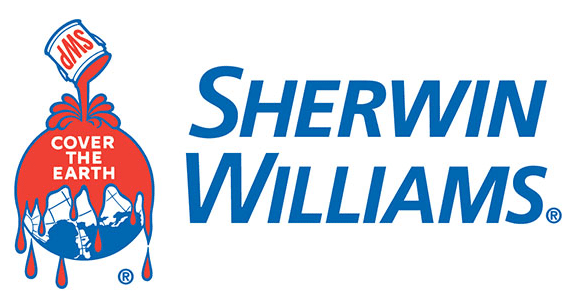We have the answers to your questions...
At Riley Paint & Wallpaper, we specialize in professional painting and wallpaper services that elevate the beauty and personality of any space—residential or commercial. Whether you’re considering a bold new wall color, a custom wallpaper installation, or a complete interior or exterior refresh, we understand you may have questions about preparation, materials, timelines, and pricing. This section is designed to provide clear, helpful answers to the most common questions we receive. If you don’t find what you’re looking for here, feel free to reach out—our team is always happy to help bring your vision to life.
The statement of sealing the walls has replaced the once used statement of “sizing the walls”. Sizing the walls was applying diluted wallpaper adhesive to the walls to slow down the walls absorption of the adhesive that was placed on the back of the wallpaper. Today, instead of sizing, we apply a wallpaper primer sealer.
The purpose of sealing the walls is two fold. First, it allows the wallpaper adhesive on the back of the wallpaper to dry slowly allowing for a better bond. Second, it allows for future removal of the existing wallpaper without tearing or damaging the drywall. When Shieldz is applied and eventually the wallpaper is removed and the adhesive is washed off then the wall looks as good as the day it was first sealed.
Today, we seal the walls with a paint product called SHIELDZ. It is the best product found on the market today and provides excellent wall protection. Not all products are equal. Some react to the moisture in the adhesive which could affect positioning of the wallpaper during installation.
No. Sixty or more years ago, wallpaper did not have a protective coating on its surface. It was just ink and paper. Therefore, you could apply one wallpaper over another and it would bond without any problem.
Yes, todays wallpaper has a protective coating applied to its face to resist dirt and allow for cleaning. Wallpaper adhesives will not adhere to the protective surfaces. If you were to apply wallpaper directly over another, in time it would come loose.
For the best protection of your walls, I would suggest having a professional remove the wallpaper. However, here are the basics. Applying HOT water along with a solution called Dif will allow for removal. When wallpaper becomes wet enough, the adhesive will soften and the wallpaper will release (maybe with some help). I have found that using a pump up garden sprayer works best for wetting the wallpaper. Add the Dif to the sprayer along with the hottest water you have. Pump up the sprayer and wet the surface. (WARNING, water and electricity don’t mix so cut off the breaker in the panel box to avoid shock or fire.) Some wallpapers receive water and are saturated quickly. Others may repel the water.
Determining how wallpapers may react to removal.
1. Fabric back vinyl, lift a corner and gently pull off of the wallpaper at a 45 degree angle.
2. Uncoated Wallpaper, wet multiply times as described above then remove.
3. Vinyl protected front/paper-backed wallpaper, the front needs to be removed first, then the paper backing. Try lifting the vinyl front and pulling it off. It may come as an entire piece. If not, then a razor scraper will remove the vinyl front. After the vinyl front is removed the wet the paper backing and scrape off.
4. Non woven papers, lift a corner and pull at a 45-degree angle.
5. Grass Cloths, wet with water and the woven front will remove first. Then rewet the paper backing and scrape off.
6. On wallpapers where water penetration is slow, sand the surface with sandpaper to break through the protective coating.
Wallpaper is made up of paper and ink. When the back of the wallpaper is pasted with adhesive, the wallpaper requires a soaking time. This time is generally 5 minutes. During this time, the wallpaper becomes wider. For instance, a wallpaper that is 27’ wide will grow to about 27.5” wide. The wallpaper will generally stay at its new width. When adequate time is not given for the expansion then it will push out at the seams and pucker.
A non woven wallpaper is one of the newest types of wallpaper. This material does not expand and get wider. It maintains its originally size. Because of this you can apply the adhesive directly to the walls and not the back of the wallpaper. One of the other benefits of this type paper is that when it is time to remove the wallpaper, you can just grab a corner and pull the entire sheet off dry.
A liner paper is a blank stock paper with no ink on it. It can be sued to make rough walls appear to be smoother. However, the main use today is with European wallpapers such as Cole & Son or Osborne and Little and a few others. The reason that these papers require a liner is because of the heavy stock paper that they are printed on. When adhesive is applied to the back of these heavy stock papers, the adhesive quickly absorbs into the paper stock instead of having a chance to adhere to the wall. When applied over liner paper, the adhesive has a chance to grab and bond to the liner paper. American papers are printed on a lighter weight stock and don’t have this problem.
The proper procedure for installing such papers is to seal the wall (so the wall is protected for future removal), install a liner paper horizontally (let dry for 24 to 48 hours), then install the wallpaper.
Without a liner, you can be sure that your wallpaper will soon come off of the wall. Further more, after discussing this matter with the makers of these papers, their stance was this; “we cannot demand that someone uses a liner paper but if it comes off, we will not stand behind it.”
Some of the European companies are now switching to the use of non woven papers. These papers will not require a liner paper.





